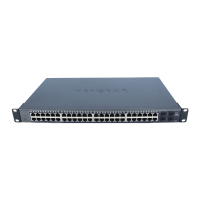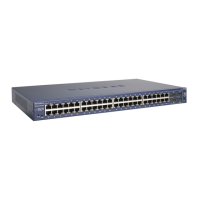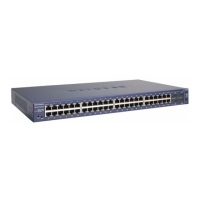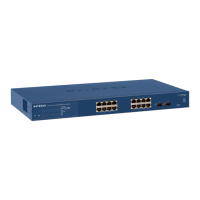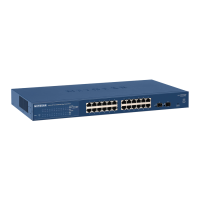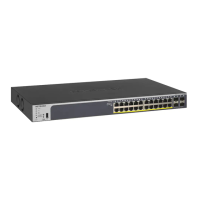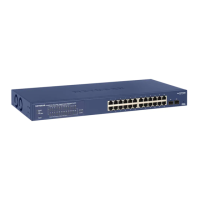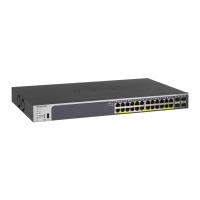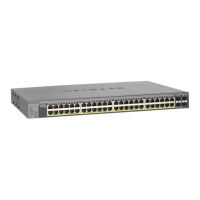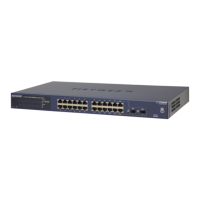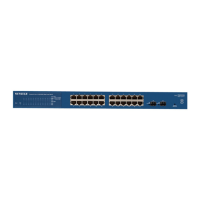139
GS748T Smart Switch
4. In the Next Hop IP Address field, specify the outgoing router IP address to use when
forwarding traffic to the next router (if any) in the path towards the destination. The next
router is always one of the adjacent neighbors or the IP address of the local interface for a
directly attached network. When creating a route, the next hop IP must be on the same
network as the routing interface. Valid next hop IP Addresses can be seen on the 'Route
Table' page.
5. In the Preferenc
e field, specify a preference value for the configured next hop.
The preference is an integer value from 1 to
255. You can specify the preference value
(sometimes called “administrative distance”) of an individual static route. Among routes to
the same destination, the route with the lowest preference value is the route entered into
the forwarding database. By specifying the preference of a static route, the user controls
whether a static route is more or less preferred. The preference also controls whether a
static route is more or less preferred than other static routes to the same destination.
6. In the Iden
tifier field, optionally specify a description to identify the route.
7. T
o add a route, enter the route information into the appropriate fields and click Add.
8. T
o delete a route, select the check box next to the route and click Delete.
The Route S
tatus table provides information about the routes the GS748T already has in its
routing table.
Field Description
Route Type Indicates whether the learned route is a static or default route.
Network Address The IP route prefix for the destination.
Subnet Mask Also referred to as the subnet/network mask,
this indicates the portion of the
IP interface address that identifies the attached network.
Protocol This field tells which protocol created the specified route. The possibilities
are one of the following:
• Local
•Static
Next Hop Interface The outgoing router interface to use when forwarding traffic to the
de
stination.
Next Hop IP Address The outgoing router IP address to use when forwarding traffic to the next
ro
uter (if any) in the path towards the destination. The next router is always
one of the adjacent neighbors or the IP address of the local interface for a
directly attached network.
Preference Shows the preference value for the configured next hop.
